[Motherboard / Graphics Card] How to Improve Game Performance (FPS)
[Motherboard / Graphics Card] How to Improve Game Performance (FPS)
Description:
Low FPS (frames per second) during gaming can adversely affect the gaming experience, leading to lag and stuttering. This article provides several easy ways to improve game FPS on existing hardware, enhancing and elevating the gaming experience.
Table of Contents:
1.Update Graphics Card Drivers
2.Optimize with ASUS GPU Tweak III Graphics Card Software
2.1. Use ASUS GPU Tweak III's Overclocking Mode
3.Adjust BIOS Settings through the Motherboard
3.1. Enable BIOS AI Overclocking Option
4.Optimize via Windows 10/11 Settings
4.1. Enable Game Mode in Windows 11
4.2. Enable Game Mode in Windows 10
4.3. Disable Automatic Startup of Background Apps in Windows 11
4.4. Disable Automatic Startup of Background Apps in Windows 10
5.Fine-Tune Game Settings
5.1. Use NVIDIA DLSS (Deep Learning Super Sampling) (requires game support / graphics card support / driver support)
5.2. Use AMD FSR (FidelityFX Super Resolution)
5.3. Lower In-Game Graphics Settings
5.4. Use Appropriate Screen Resolution
6.Q & A
1.Update Graphics Card Drivers
NVIDIA and AMD release driver updates periodically. These new driver versions often optimize performance for popular games in the market.
For detailed instructions on updating graphics card drivers, refer to the FAQ: [Graphic Card] How to Update ASUS Graphics Card Drivers?
You can obtain the latest software, manuals, drivers and firmware from the ASUS Download Center.
*How to find your product model: https://www.asus.com/support/Article/565
Instructions:
1.1. Visit the ASUS Download Center and download the latest NVIDIA Driver for your graphics card.
(1) Enter the model number -> (2) Click on the corresponding model.
(Example: ROG-STRIX-RTX3080-O10G-WHITE model)

(3) Click on "Drivers & Utility."
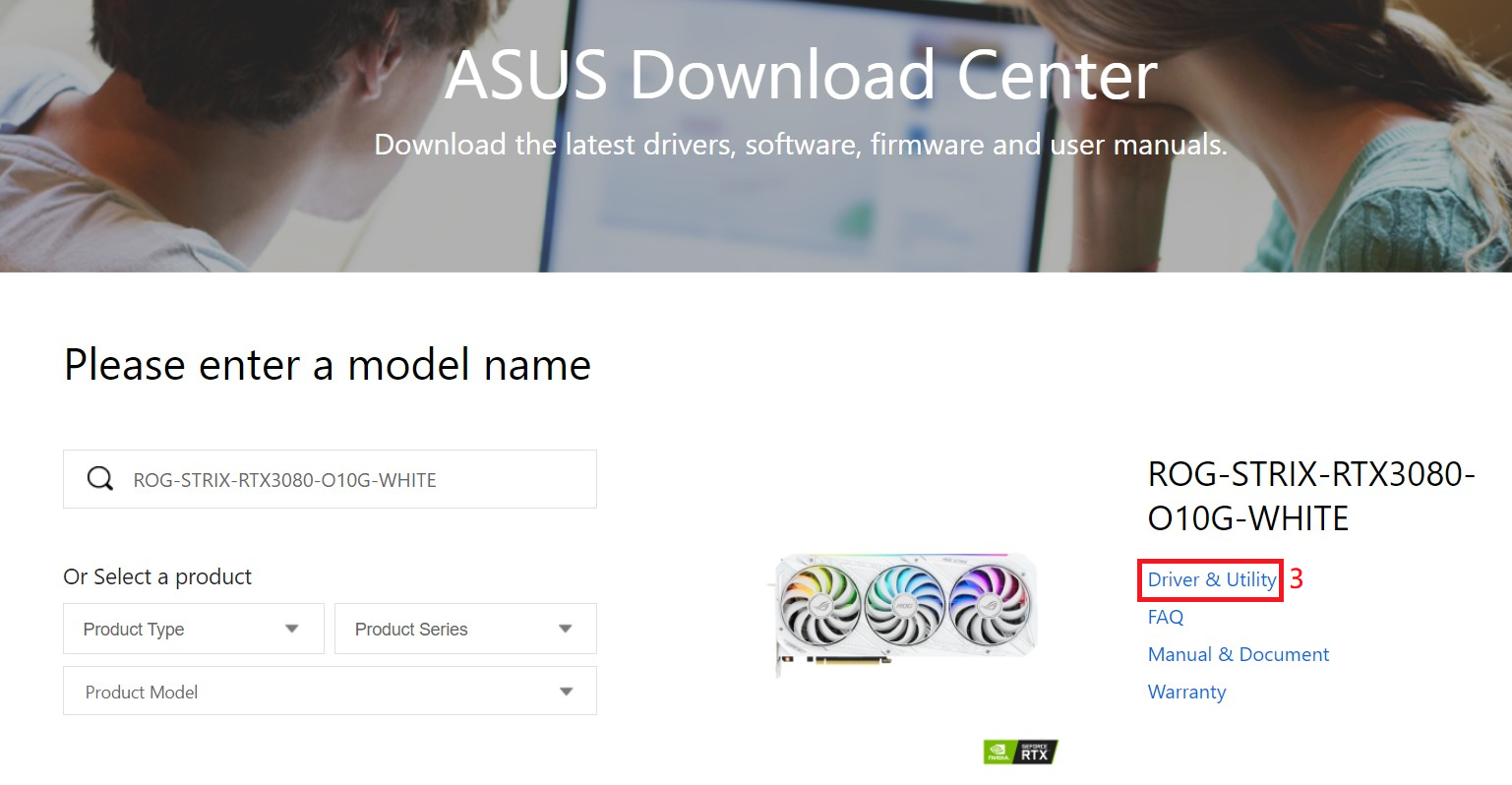
1.2. After the driver download page pops up, (3) click on "Drivers & Utility" -> (4) Select your operating system.
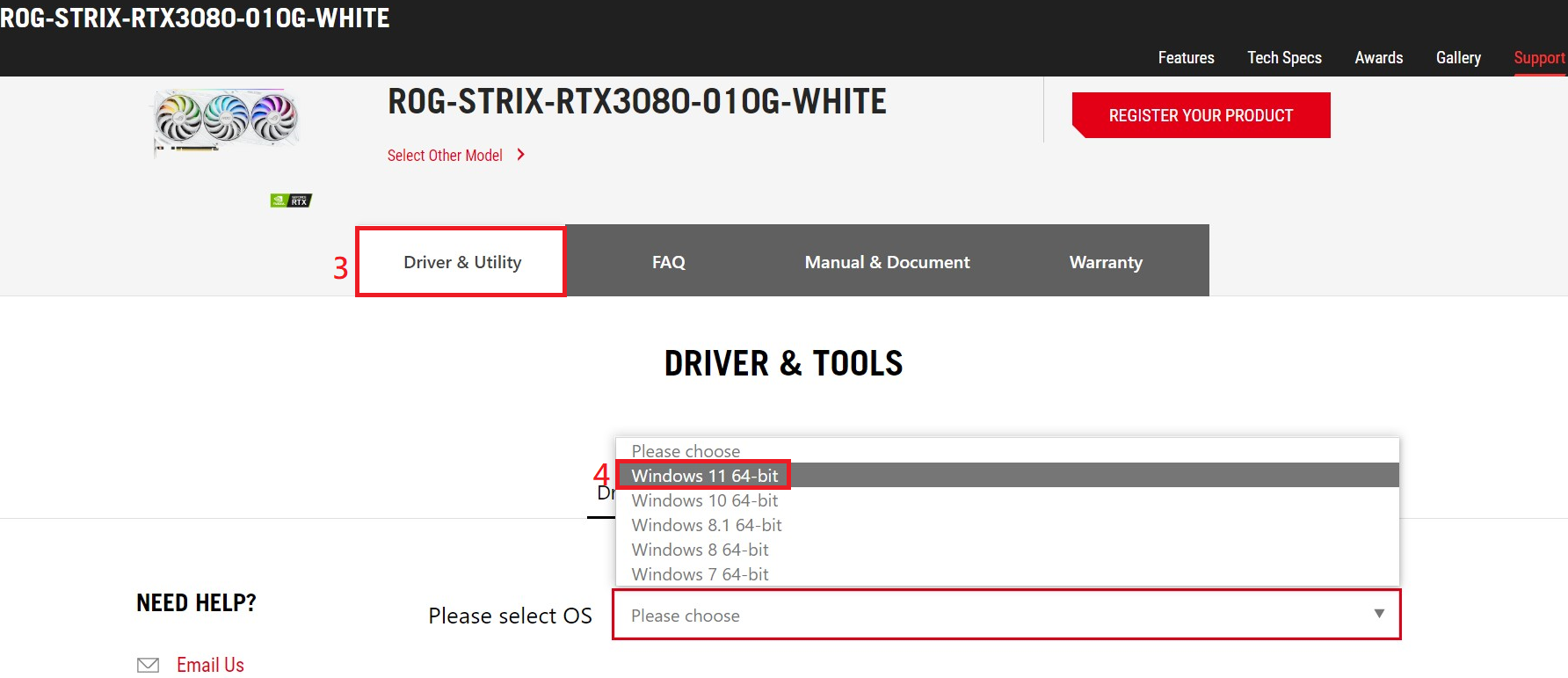
1.3. Scroll down the page to find the display drivers, check the version information and date, and then click "Download."

1.4. After the download is complete, click on the executable file and follow the prompts to complete the installation.
2.Optimize with ASUS GPU Tweak III Graphics Card Software
ASUS GPU Tweak III is software for adjusting system parameters for NVIDIA and AMD desktop graphics cards, including overclocking, voltage adjustment, fan control, and more. You can optimize hardware performance parameters using ASUS GPU Tweak III. For detailed instructions on installing and using ASUS GPU Tweak III, refer to the FAQ: [Graphic Card] ASUS GPU Tweak III Introduction
Instructions:
2.1. Use ASUS GPU Tweak III's overclocking mode.
2.1.1. Click on the GPU Tweak III icon on the desktop to access the main interface.

2.1.2. In the main interface window, click on "Overclocking Mode" to enable it. The system will automatically use overclocking mode based on the graphics card's load.
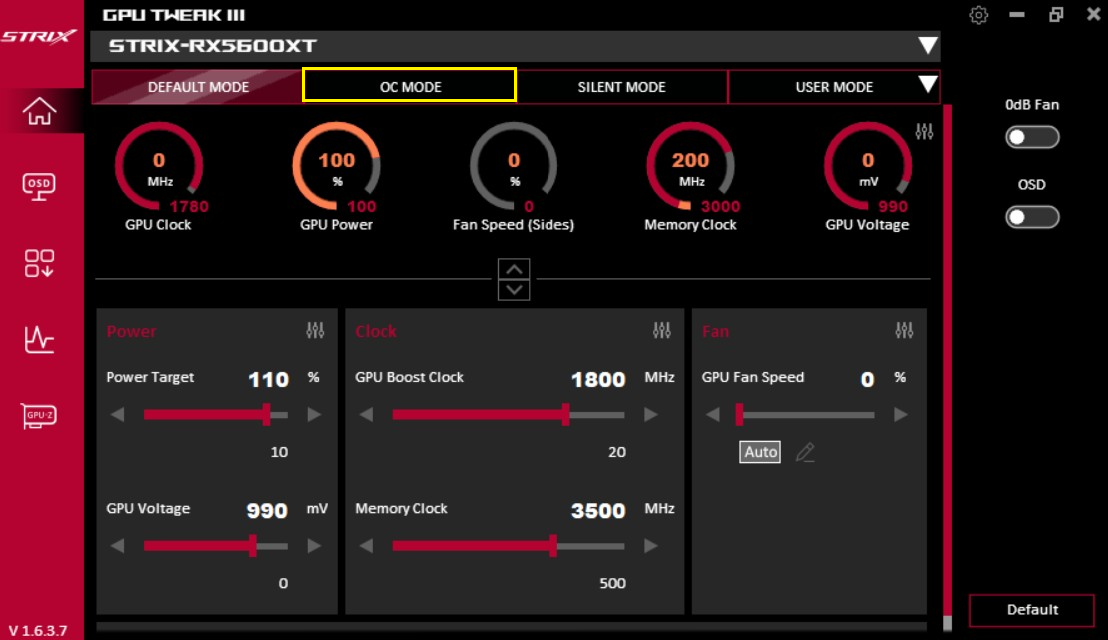
3.Adjust BIOS Settings through the Motherboard
3-1. Enable the BIOS Ai Overclocking Option (Requires ASUS motherboard support, refer to the official website for model-specific specs) For detailed Ai Overclocking information, refer to the FAQ: [Motherboard] Ai Overclocking Introduction
Instructions:
3.1.1. After the ASUS motherboard boots up and displays the ASUS LOGO, press the DEL key on the keyboard.

3.1.2. On the BIOS screen, select "AI Overclocking" and press the right arrow key (example: PRIME Z490-A).
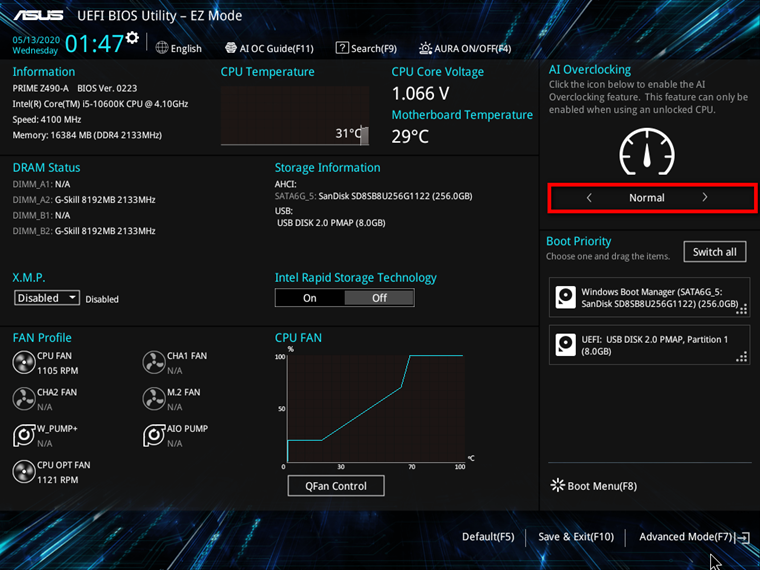
3.1.3. Choose "AI Optimized" for AI Overclocking to enable the feature.
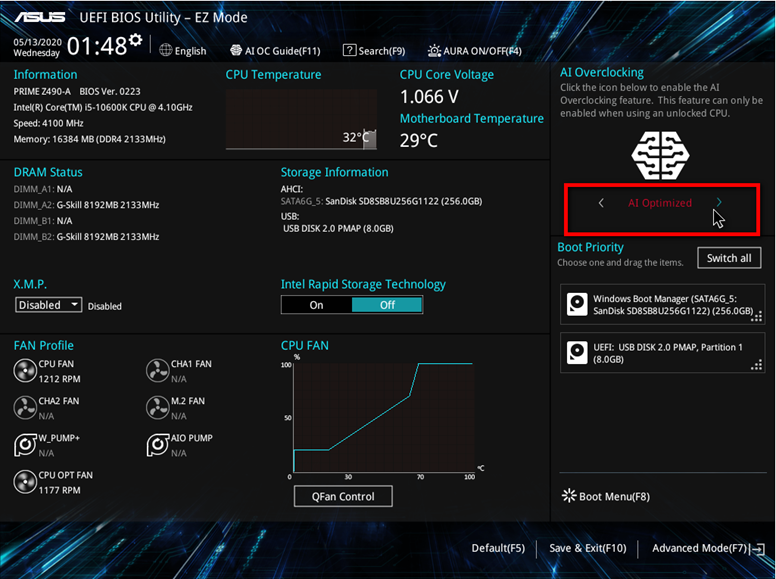
3.1.4. Press "F10" on the keyboard to save and restart.

4.Optimize via Windows 10/11 Settings
4-1. Enable Game Mode in Windows 11
4.1.1. Click on the (1) Windows icon in the taskbar and select (2) Settings.
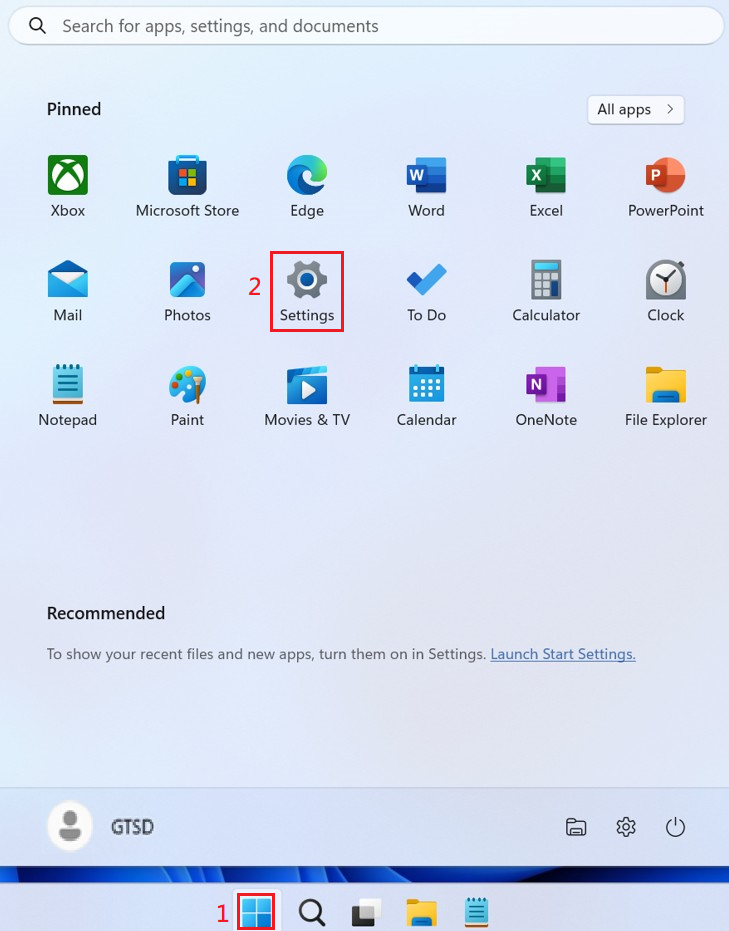
4.1.2. In the left sidebar, click on (3) Gaming, and in the right pane, select (4) Game Mode.

4.1.3. Click "Turn On" to enable Game Mode.

4-2. Enable Game Mode in Windows 10
4.2.1. Click on the (1) Windows icon in the lower-left corner, and when the Start menu appears, click on the (2) Settings icon.

4.2.2. In the Windows Settings page, click on (3) Gaming.

4.2.3. In the left-hand menu, click on (4) Game Mode, and on the Game Mode page, click (5) Turn on Game Mode.
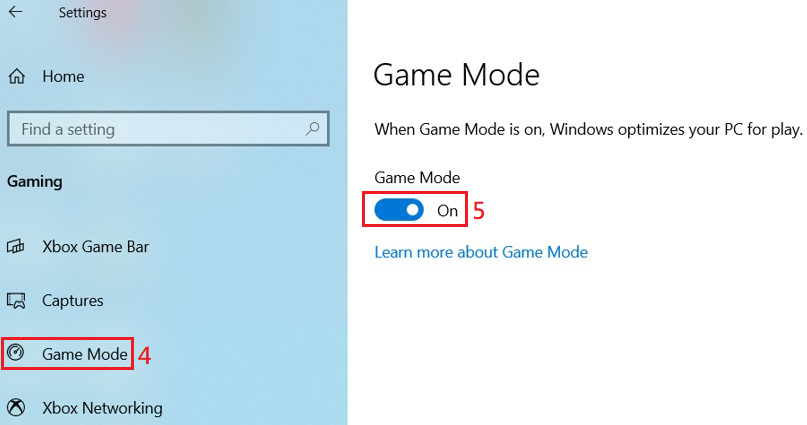
4-3. Disable Automatic Startup of Background Apps in Windows 11
4.3.1. Click on the (1) Windows icon in the taskbar and select (2) Settings.

4.3.2. In the left sidebar, click on (3) Apps, and in the right pane, click on (4) Startup.
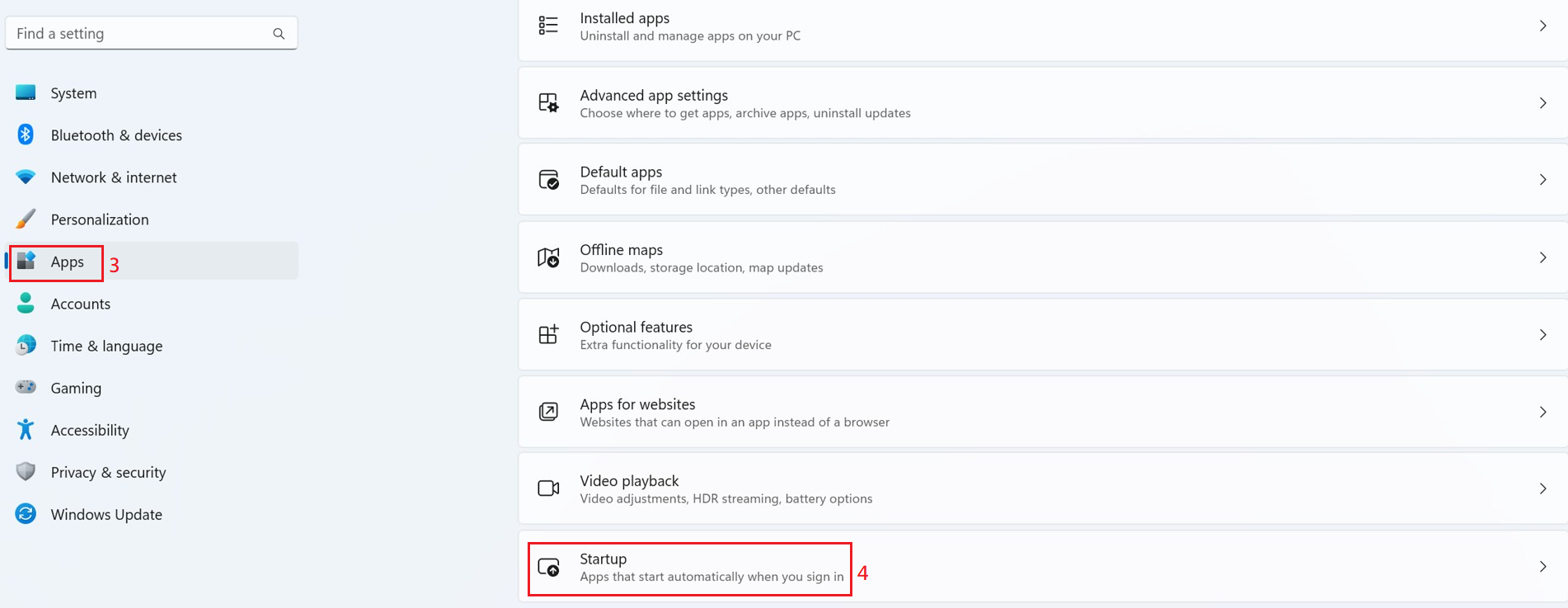
4.3.3. Click (5) on apps that affect system performance but are not frequently used to recommend disabling.
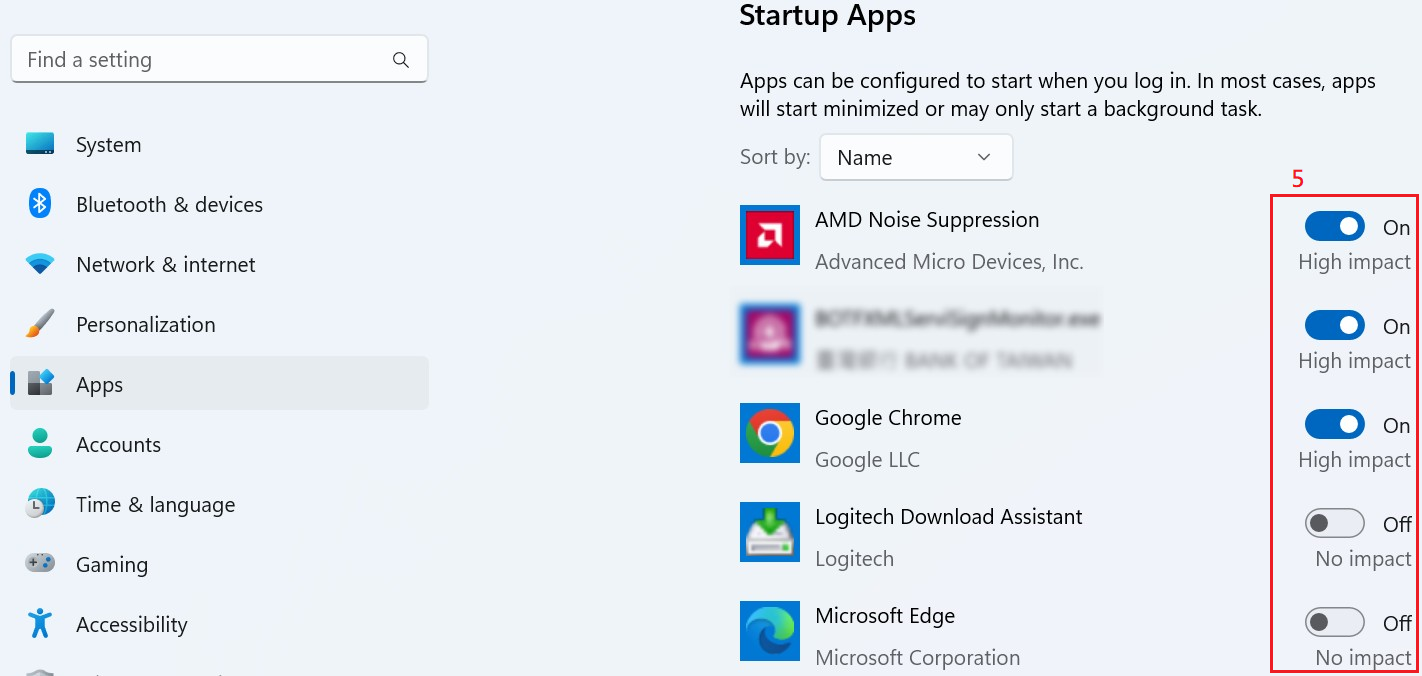
4-4. Disable Automatic Startup of Background Apps in Windows 10
4-4-1. Click on the (1) Windows icon in the lower-left corner, and when the Start menu appears, click on the (2) Settings icon.
4-4-2. Click on (3) Apps.

4-4-3. Click on (5) on apps that affect system performance but are not frequently used to recommend disabling.
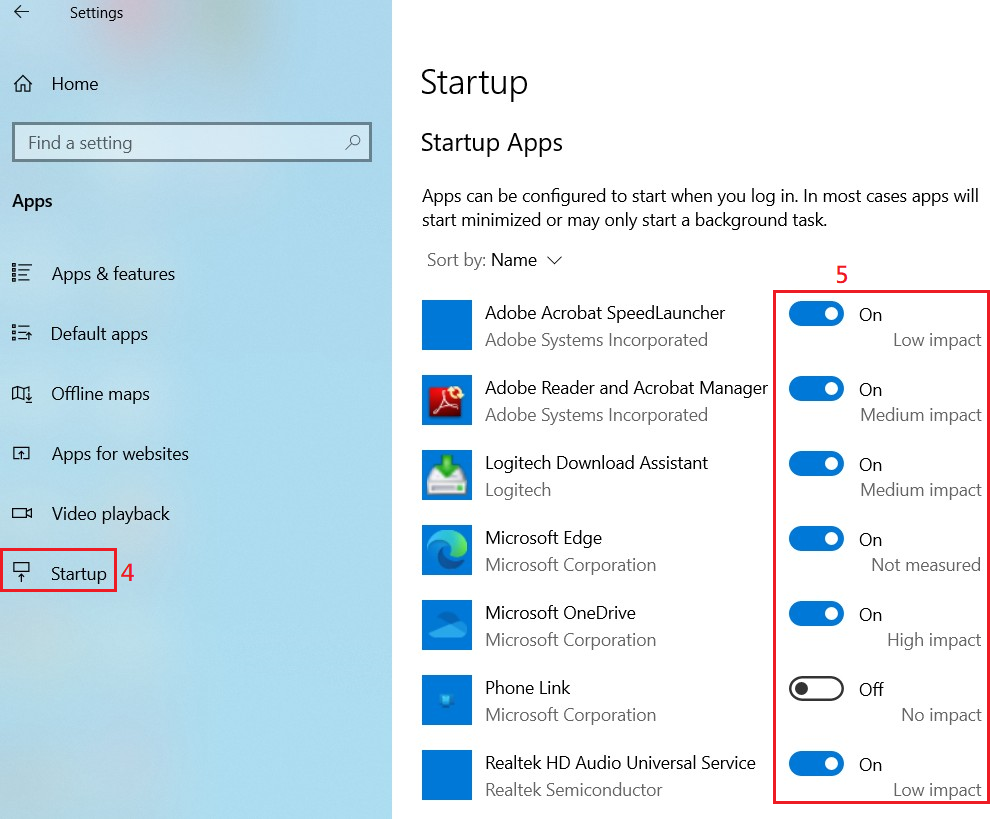
5.Fine-Tune Game Settings
5-1. Use NVIDIA DLSS (Deep Learning Super Sampling) Technology (Requires game support, graphics card support, and driver support)
For detailed NVIDIA DLSS information, refer to the FAQ:[Graphic Card] NVIDIA DLSS Introduction
After launching a game, you can usually find the NVIDIA DLSS settings option within the game's graphics settings. As an example, here's "Red Dead Redemption" with DLSS settings:
There are typically options like OFF, PERFORMANCE, BALANCED, and QUALITY to choose from. We recommend using the BALANCED mode.
Note: Different games may offer different settings options.
5-2. Use AMD FSR (FidelityFX Super Resolution) Technology (Requires game support, graphics card support, and driver support)
After launching a game, you can usually find the AMD FSR settings option within the game's graphics settings. As an example, here's "Baldur's Gate 3" with FSR settings:
There are typically options like OFF, PERFORMANCE, BALANCED, and QUALITY to choose from. We recommend using the BALANCED mode.
Note: Different games may offer different settings options.
5-3. Lower In-Game Graphics Settings
Lower some in-game graphics settings, such as details, shadows, ray tracing, and other special effects. Reducing these settings can decrease the workload on the graphics card and improve game performance.
5-4. Use an Appropriate Screen Resolution
Game resolutions like 8K (7680x4320), 4K (3840x2160), and Full HD (1920x1080) vary in quality. Higher resolutions offer better visuals but demand more from the graphics card. If a game doesn't perform well, consider lowering the resolution to enhance the gaming experience.
6. Q & A
Q1:Q1: My game supports DLSS/FSR, but I don't see DLSS/FSR options in the game settings. What should I do?
A1:
1. Ensure your AMD/NVIDIA drivers are up-to-date.
2. Confirm if your graphics card model supports DLSS/FSR by referring to the official NVIDIA and AMD websites.
DLSS:Deep Learning Super Sampling (DLSS) Technology | NVIDIA
FSR:AMD FidelityFX™ Super Resolution | AMD
3. Make sure the game is updated to the latest version.
Q2: I've applied the recommended optimizations, but I'm still not satisfied with game performance. Are there other ways to improve it?
A2:
1. Update the game: Games may not fully utilize hardware performance when initially released. Consider providing feedback to the game developer or updating to the latest game version. Game developers often release updates to optimize performance based on user feedback.
2. Clean hardware cooling devices: Overheating hardware can result in poor performance and potentially damage or shorten the lifespan of components. Cleaning dust from hardware can improve efficiency.
For details on cleaning a graphics card, refer to the FAQ: [Graphic Card] How to clean a graphics card?
3.Verify hardware meets game requirements: If your computer's hardware configuration doesn't meet the game's requirements, it can lead to slow performance or graphical issues. Check the game's system requirements and ensure your hardware meets them.





